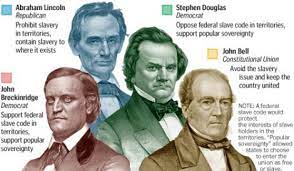What was the Wilmot Proviso?
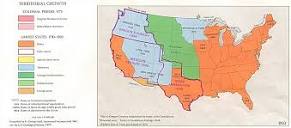
When the United States gained new territories as a result of the Mexican War in the late 1840s, the nation had to decide whether to admit these lands as slave territories or free territories. The delicate balance of power between North and South—free and slave— depended on this decision. During the early days of the Mexican War, Pennsylvania congressman David Wilmot had predicted the dilemma. He proposed a law stating, “neither slavery nor involuntary servitude shall ever exist in any” lands won from Mexico. Southerners angrily denounced the Wilmot Proviso. The northern-dominated House of Representatives approved the law, but the Senate voted it down.
What was the significance of John Brown's raid on Harpers Ferry?
Gathering his following of 21 men—including 5 free African Americans—Brown set out to seize the federal arsenal in Harpers Ferry, Virginia (now in West Virginia). He hoped to inspire local slaves to join a revolution that would destroy slavery in the South.
Brown had chosen Harpers Ferry because it was a hub of trains and canals, which would offer efficient escape routes. This locale was also near the borders of Pennsylvania, a free state, and Maryland, where there were many free African Americans. It seemed the ideal launching point. But the effort failed. Few Americans—black or white—were prepared to join a rebellion organized by this intense, fanatical white man.
Local residents surrounded Brown’s men in the arsenal, and federal troops soon arrived to arrest them. Two of Brown’s sons were killed in the fray, but a few of the rebels escaped to Canada. Brown and several others, however, went to the gallows. Brown’s attack increased the heat in already-boiling tempers. Similar to the Dred Scott decision, suspicion and rumors were widespread. 
Where were the opening shots fired in the Civil War?
When the southern states seceded, they seized the federal forts and arsenals within their borders. When Lincoln was sworn into office, only four forts remained in Union hands. The most important of these was Fort Sumter, which guarded the harbor at Charleston, South Carolina.
A wrong move could touch off a war. At last, trying to steer a middle course, Lincoln notified South Carolina that he was sending supplies—food only, no arms—to the fort.
The Confederates fired on the fort. The Union troops eventually ran out of ammunition, forcing the commander to surrender.
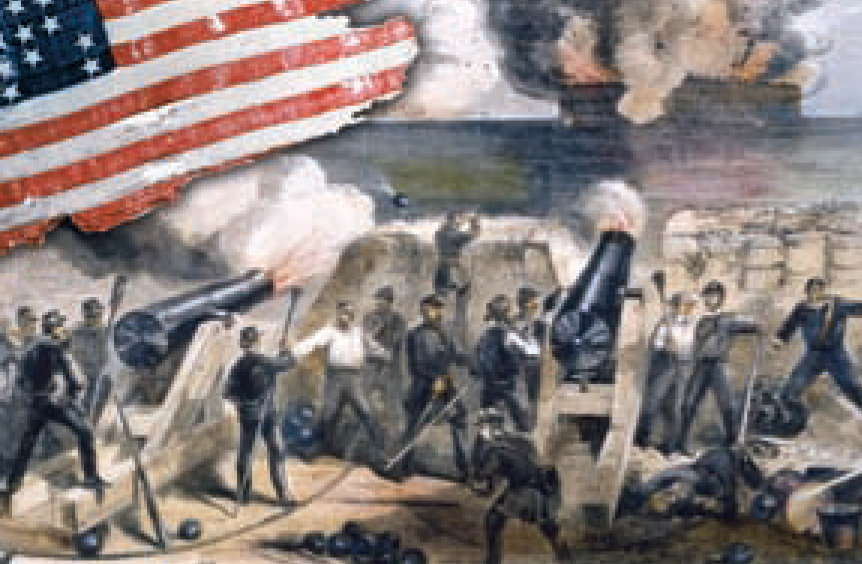
Who was John Wilkes Boothe and what impact did he have on history?
A strong supporter of slavery and the Confederate cause, John Wilkes Booth had a
noted emotional instability and egoism as well as an intense hatred of Abraham Lincoln. Booth’s original plan was to kidnap Lincoln. He organized a conspiracy in late 1864, enlisting the help of several others and meeting with them often.
After finding out on the morning of April 14, 1865, that President Lincoln would appear at an evening theater performance, Booth gave his co-conspirators a new mission. At six o’clock that evening, Booth arrived at the theater and tampered with the door to Lincoln’s box, ensuring that it could be jammed shut from the inside.
Of his plan to assassinate both Lincoln and the Secretary of State William Seward, he succeeded in killing only the President. After more than 10 days on the run, Booth and coconspirator David Herold were trapped in a barn. Federal troops surrounded the barn and threatened to set it aflame. Herold surrendered, but Booth remained. During the fire, Booth was shot and killed; however, no one knows whether the shot was selfinflicted or resulted from the fire of federal troops.
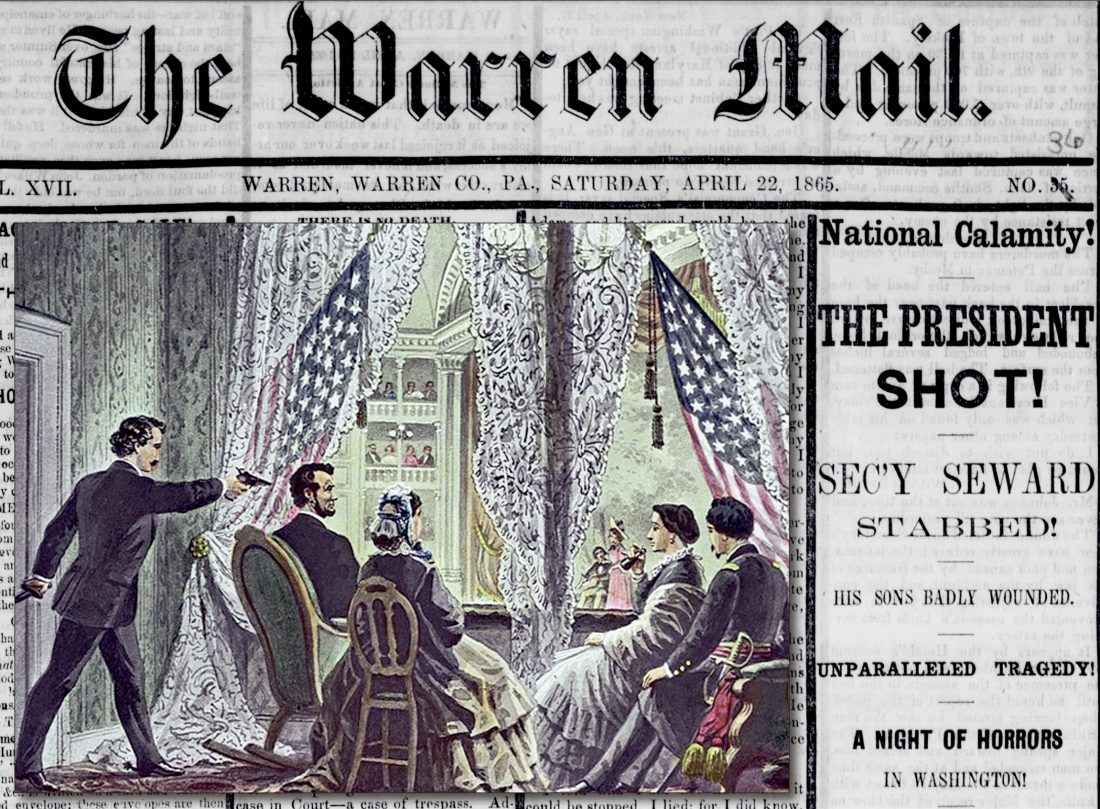
Define scalawag. Which groups of people in the South welcomed scalawags, and which groups disliked them?
White southerners who had been locked out of pre–Civil War politics but who, after the war, joined the Republican Party; they became the enemy of white southerners who
opposed Reconstruction and the allies of those who joined the Republicans in seeking change.
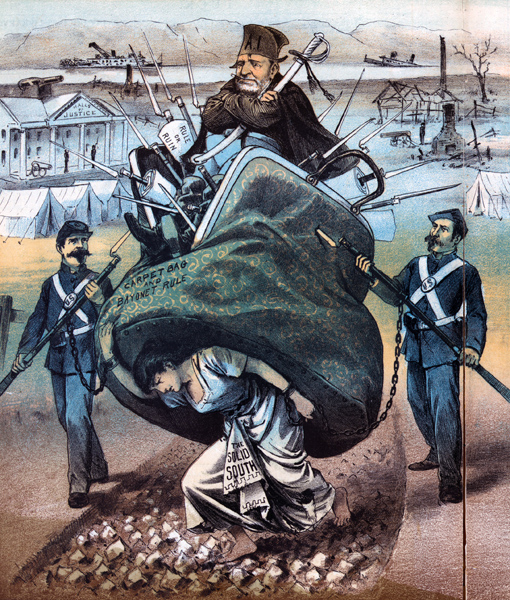
What was the Compromise of 1850?
1. Congress would admit California as a free state.
2. The people of the territories of New Mexico and Utah would decide the slavery question by popular sovereignty.
3. The slave trade—but not slavery—would be ended in Washington, D.C.
4. Congress would pass a strict new fugitive slave law.
5. Texas would give up its claims to New Mexico in return for $10 million.
What was the Dred Scott decision and why is it important?
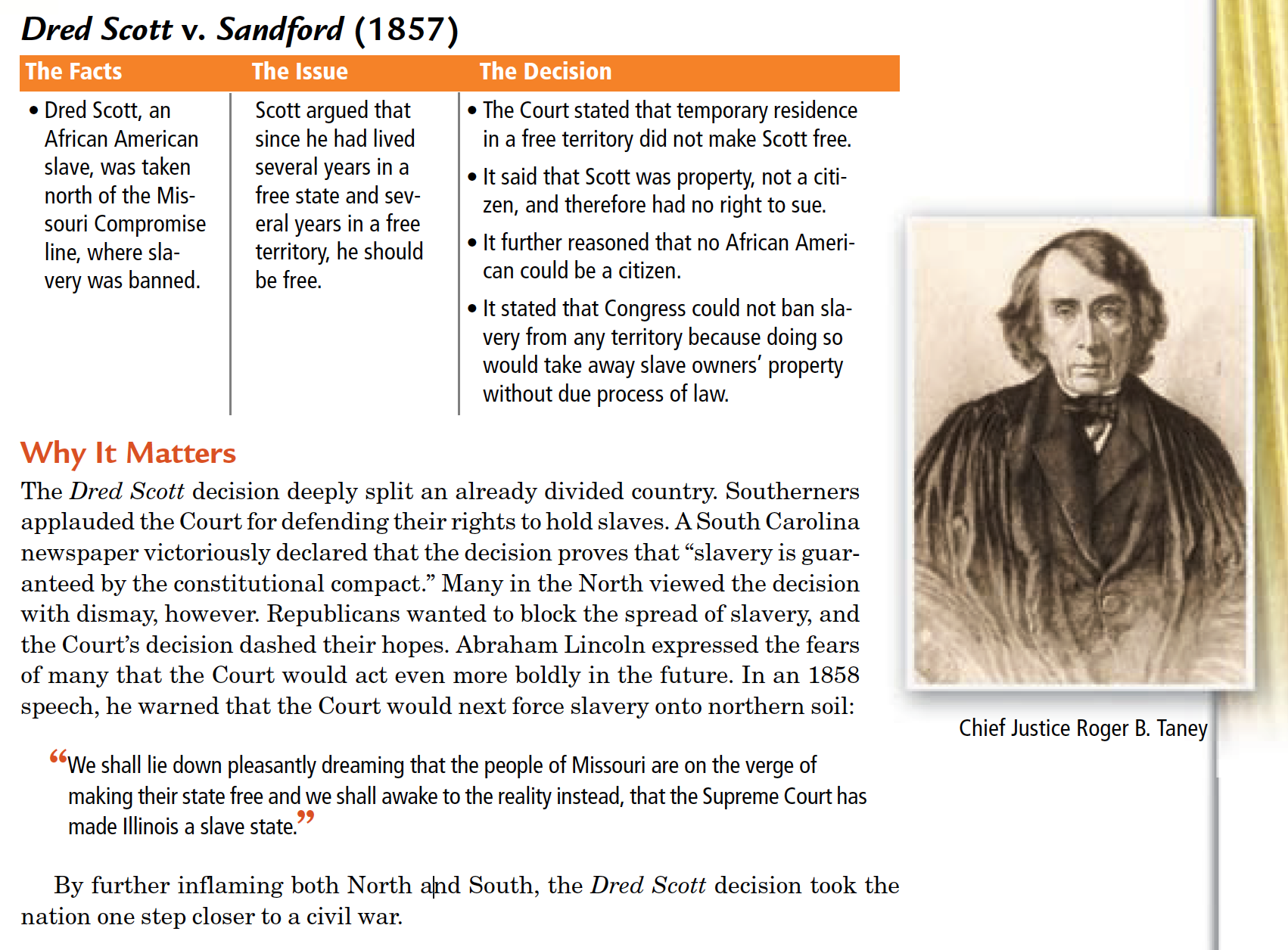
What was the deadliest battle in the western theater of the Civil War?
In April of 1862, General Grant’s troops fought a terrible battle in southwest Tennessee. In just two days of fighting, nearly 25,000 Union and Confederate soldiers were killed or wounded. The Battle of Shiloh horrified both the North and South and damaged Grant’s rising reputation.
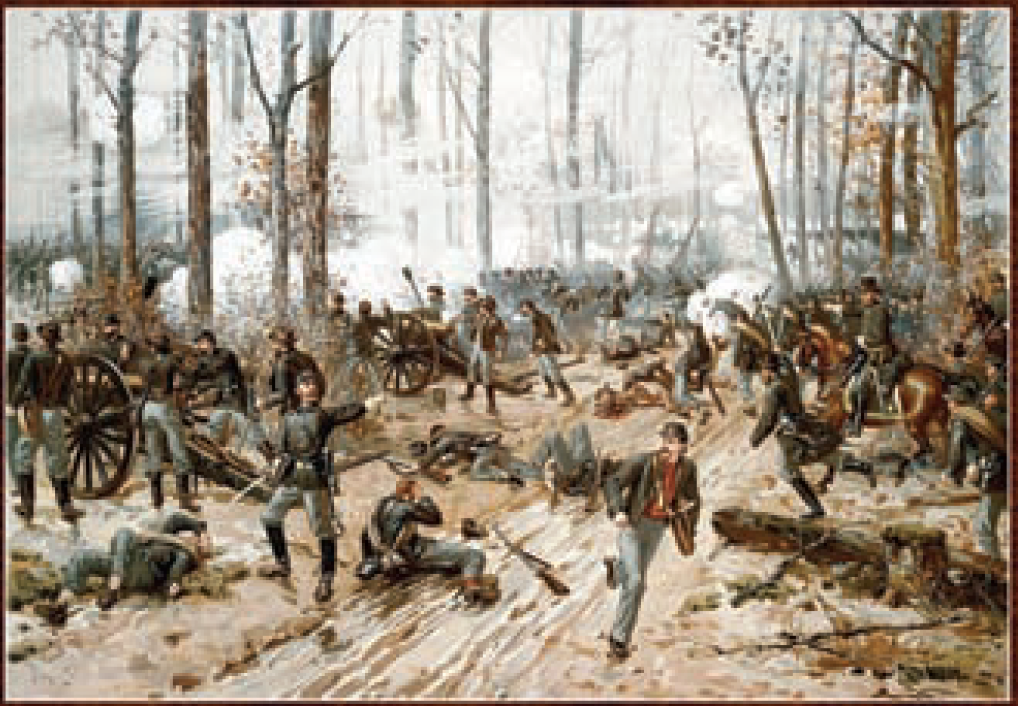
How did the Emancipation Proclamation and the efforts of African American soldiers affect the course of the war?
The Emancipation Proclamation redefined the Union cause, making the war about slavery. After the issuance of the Emancipation Proclamation, the Union started actively recruiting African American troops. These troops fought bravely and helped the Union cause.
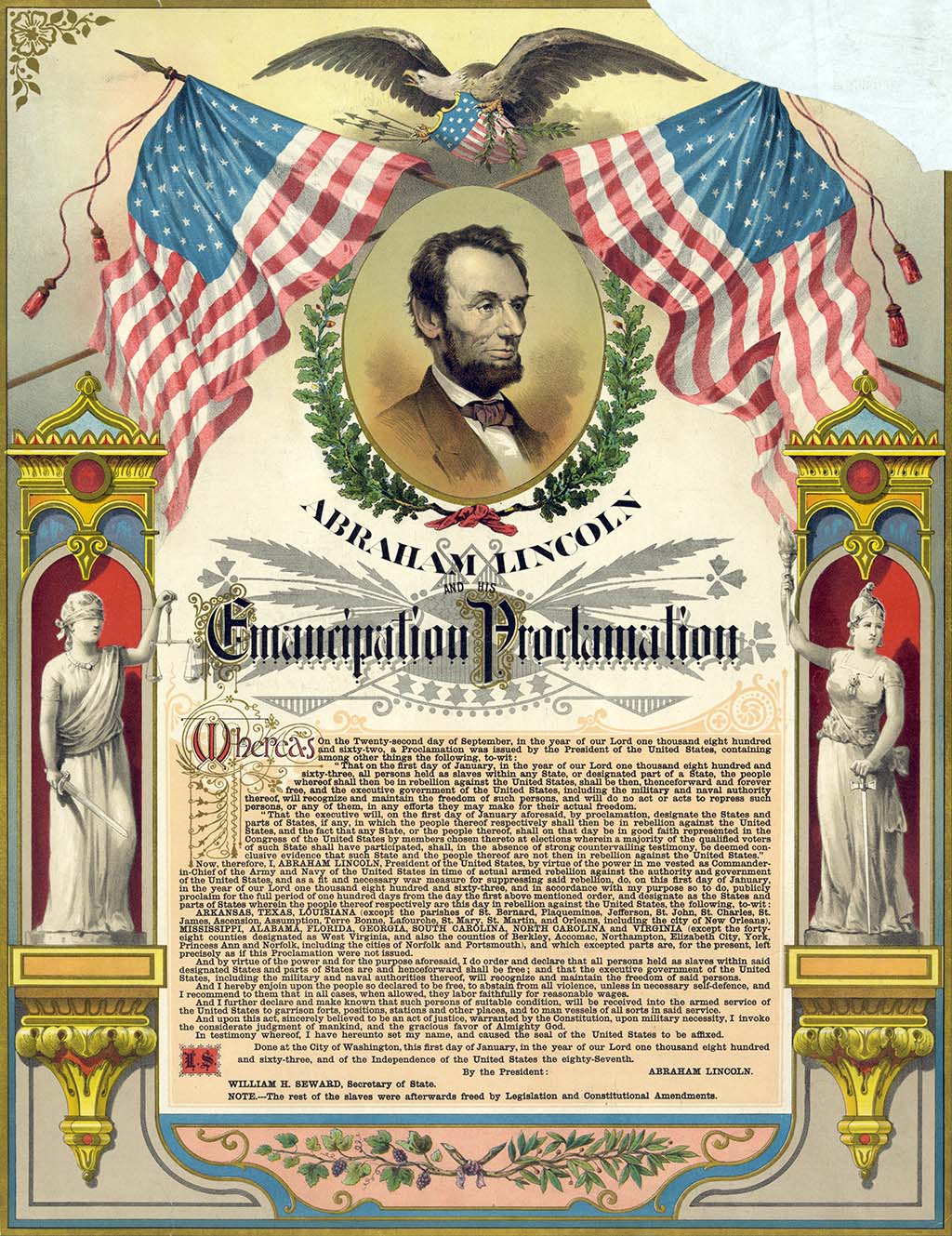
List three successes from Reconstruction.
• The Union is restored.
• Southern economic rebuilding begins.
• African Americans are granted citizenship and voting rights.
• Freedmen’s Bureau helps African Americans get education, housing, and jobs.
• Public school system develops in the South.
What was the Kansas-Nebraska Act and why was it important?
Kansas-Nebraska Act, 1854
• Created potential for slavery in Kansas and Nebraska territories by allowing for popular sovereignty
Significance: Sponsored by Stephen Douglas, this bill overturned the Missouri Compromise. Although it was meant to unite the nation, it caused further division and led to the creation of the Republican Party.
The book lists several advantages that the North had over the South in the Civil War. List and explain three of them.
1. The North enjoyed a tremendous advantage in population. Some 22 million people lived in the states that stayed in the Union. By contrast, the Confederacy had a population of only 9 million, of whom 3.5 million were enslaved African Americans.
2. The industrialized North was far better prepared to wage war than the agrarian South. Most of the nation’s coal and iron came from Union mines, and the vast West was a source of gold, silver, and other resources.
3. The densely populated urban areas of the Northeast supported a wide variety of manufacturing. With mechanized factories and a steady flow of European immigrants seeking work, the Union could produce more ammunition, arms, uniforms, medical supplies, and railroad cars than the Confederacy could. In addition, the Union had a larger railroad network for moving troops and material.
4. The North had an established government and an outstanding leader in Abraham Lincoln. Not everyone recognized this fact at the outset of the war, but Lincoln’s leadership would prove invaluable to the Union cause.
5. The Union had a small but well-organized navy.
What were the Monitor and Merrimack and what were their significance?
Few of the major battles of the Civil War took place at sea. However, one notable exception occurred in 1862 when the Union ship Monitor clashed with its Confederate opponent Virginia off the Virginia coast. The Union had hired a European engineer to design the Monitor as a model for a fleet of ships plated with iron armor. The Confederacy, meanwhile, had built the ironclad Virginia by refitting a Union ship previously known as the Merrimack. On March 9, the two ironclads met in battle. Though neither ship emerged the victor, the contest signaled the beginning of the end of wooden warships.
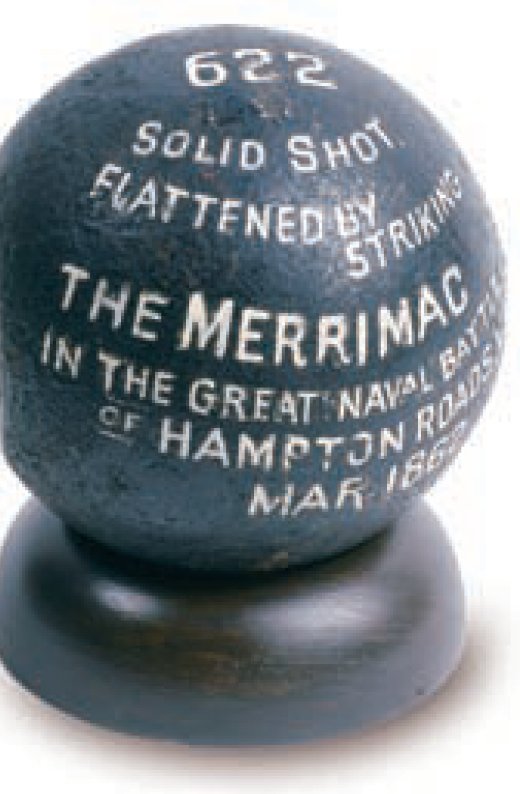
What was General Grant's strategy of total war? Give me two examples.
Goals of Total War
• Strike military and civilian targets.
• Destroy materials and crops that enemy forces might be able to use.
• Destroy railroads and factories to damage the local economy.
• Break the people’s will to continue fighting.
Sherman's capture and destruction of Atlanta and his 'March to the Sea' are two examples of total war.
Grant followed a strategy of total war after being put in charge of all Union forces in the Spring of 1864. His plan was to take the Confederate capitol of Richmond. He engaged Lee’s army in a series of ferocious battles: the Wilderness, Spotsylvania Court House, and Cold Harbor. Grant’s strategy was to inflict more losses on the Confederates than their limited resources could withstand. The cost of Grant’s relentless advance was horrifying. Tens of thousands of Union and Confederate soldiers fell on the battlefields of Virginia. In the North, public outrage began to grow.
Grant’s attack did not target the South’s military forces alone. He was following a strategy of total war, which involves striking civilian as well as military targets. The purpose of total war is to weaken not just an enemy’s armies but also the economy that supports them and the overall will of the people to fight. The South was suffering serious losses that it could not hope to replace.
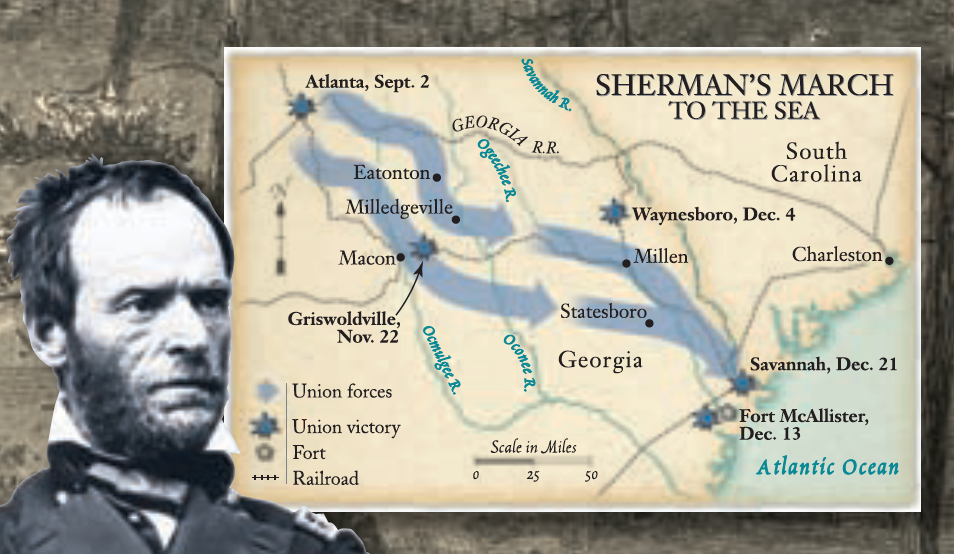
List three failures from Reconstruction.
• Distribution of wealth and power in the South remains unchanged.
• Many southerners are caught in a cycle of poverty.
• Southern governments limit African American voting.
• Racism continues in the North and South.
• Many southerners remain bitter toward the federal government and Republican Party.
Describe the dramatic instance of violence that occured on the floor of the Senate in May of 1856.
In May 1856, just as fighting broke out in Kansas, Massachusetts senator Charles Sumner delivered a blistering speech on the Senate floor, which came to be known as “The Crime Against Kansas.” He blasted southerners for their bullying and fraud in the Kansas elections, and he referred to the Border Ruffians from Missouri as “hirelings, picked from the drunken spew and vomit of an uneasy civilization— in the form of men.”
Then, Sumner invited trouble. He insulted South Carolina senator Andrew Butler, who was absent. But a few days later, Butler’s nephew, South Carolina representative Preston Brooks, attacked Sumner in the Senate, beating him unconscious with a cane.
What happened next illustrates the division of the two sides. Congress tried to punish Brooks by removing him from office. His constituency simply reelected him and sent him back. Sumner was so badly injured that he could not return to the Senate for three years. The Massachusetts voters reelected him anyway, using his empty seat as a public reminder of southern treachery. The divide between North and South grew ever wider and deeper.
The book lists several advantages that the Confederacy had over the North. List and explain three of them.
1. Many northerners were willing to let the slaveholding South go. To them, preserving the Union was not worth killing and dying for. But the Confederacy was fighting for survival.
2. The South only needed to defend, it did not need to conquer the North; it simply had to avoid defeat, expecting that in time the North would give up the effort. By and large, southern forces would be fighting a defensive war on familiar, friendly ground while northern forces had to fight an offensive war in enemy territory. Union troops and supplies had to travel farther to reach the field of battle. The North also had to devote precious military resources to defending Washington, D.C. Only the Potomac River separated the Union capital from Confederate Virginia.
3. The South had a strong military tradition and good leaders like Virginia’s Robert E. Lee, John Bell Hood, and Thomas Jonathan 'Stonewall' Jackson.
What was the significance of the Battle of Antietam?
Robert E. Lee planned to invade Union territory where he hoped to inspire a pro-Confederate uprising. A victory on Union soil might also spur European recognition of the Confederacy. Lee also hoped to acquire an abundance of food supplies for his hungry army in an area unmolested by war.
Lee’s invasion did not go according to plan. On September 8, the general issued a “Proclamation to the People of Maryland” that invited them to ally themselves with the South. But Marylanders responded to the invitation with far less enthusiasm than Lee had anticipated.
A few days later, Union soldiers found a copy of Lee’s battle plan wrapped around some cigars at an abandoned rebel campsite. As a result, Lee lost the crucial element of surprise. When McClellan reviewed the orders, he exclaimed, “Here is a paper with which if I cannot whip Bobbie Lee, I will be willing to go home.”
The two armies converged at Sharpsburg, Maryland, and McClellan’s troops fanned out near Antietam Creek. On September 17, Union troops attacked Lee’s army in three phases, moving from one side of the Confederate line to the other. By the end of the day, more than 23,000 soldiers lay dead or wounded. The Battle of Antietam marked the bloodiest single day of the Civil War. With his army exhausted and Maryland still in the Union, Lee retreated to Virginia. Though Union losses exceeded Confederate losses, Lincoln had the victory he needed to move forward with emancipation.
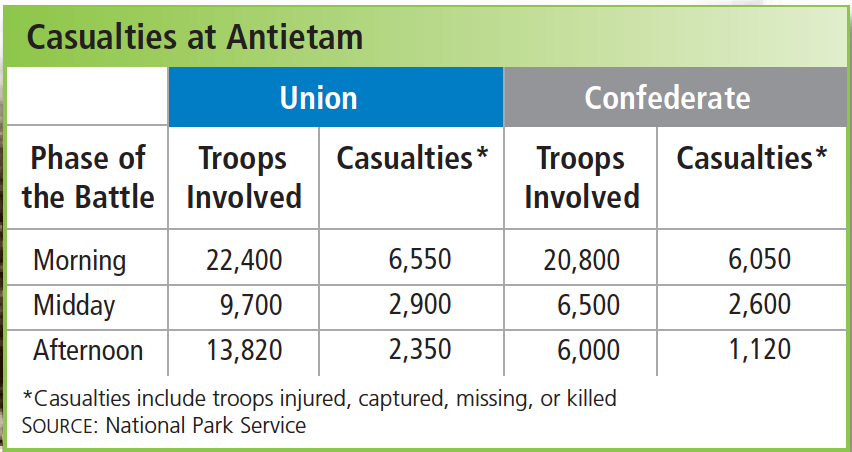
Who was Ulysses S. Grant? Why was he important to the Union war effort?
Ulysses S. Grant was a Union general. He successfully pursued the Mississippi Valley wing of the Anaconda Plan, using a siege to force the surrender of Vicksburg. In 1864, Grant took charge of the entire Union military effort and led the drive to Richmond, ultimately accepting Lee’s surrender.
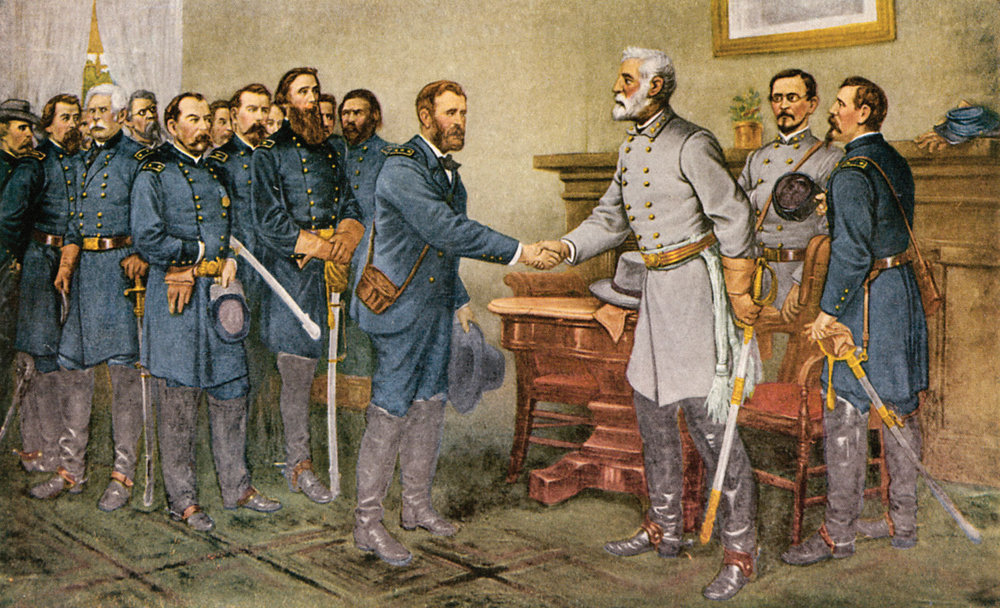
After the Thirteenth Amendment abolished slavery, southern states responded by passing “black codes.” How did these codes affect African Americans’ experience of freedom?
Such codes limited the rights of African Americans by restricting them to specific jobs, preventing them from owning land, and subjecting them to racist vagrancy laws.
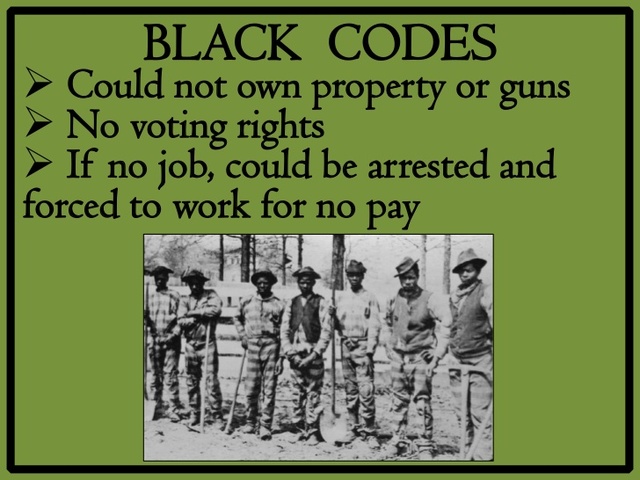
What was the Christiana riot? Explain its significance.
In 1851, a small group of free African Americans gathered in a farmhouse in Christiana, Pennsylvania. Heavily armed, they had come to protect several fugitives from their Maryland master, who had brought a federal official to reclaim them. In the scuffle that followed, the slave owner was killed. White bystanders refused to intervene to help the slave-hunting party. Although more than 30 people were tried for conspiracy, none was found guilty. No one was tried for the murder of the slave owner.
The “Christiana Riot” was a dramatic enactment of a scene that was played out in many northern communities. In Vermont and New Hampshire, in New York City, in Oberlin, Ohio, and in Baltimore, Maryland, African Americans and white bystanders defied officials who tried to reclaim fugitives to slavery.
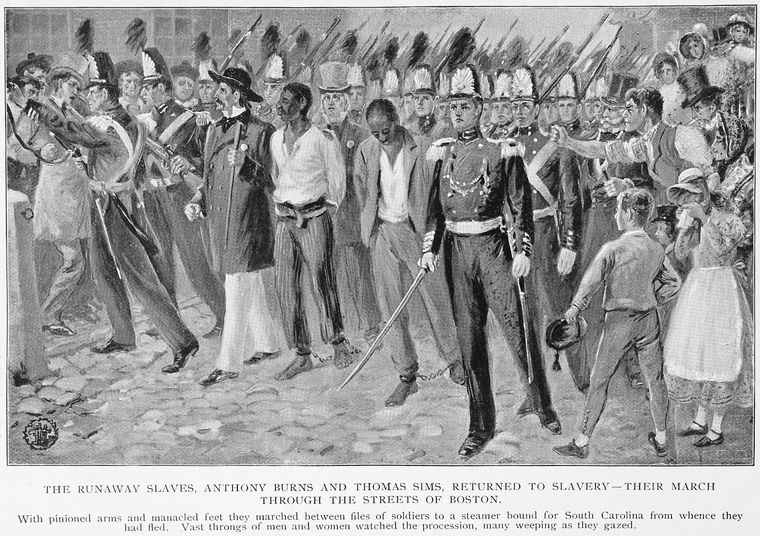
What was the Anaconda Plan?
The initial Union strategy was a two-part plan devised by General Winfield Scott, a Virginia-born hero of the Mexican-American War and the commander of all U.S. forces in 1861. First, the Union would blockade southern ports, starving the South of income and supplies. Then, Union forces would drive southward along the Mississippi River. Union control of the Mississippi would split the Confederacy in two, fatally weakening it. Scott’s plan came to be known as the Anaconda Plan, after a type of snake that coils around its prey and squeezes it to death.
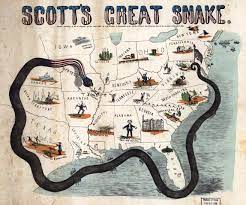
How did the Battles of Vicksburg and Gettysburg change the course of the Civil War?
The siege of Vicksburg allowed the Union army to split the South in two, and the Battle of Gettysburg dealt the South a crushing defeat from which it never recovered.
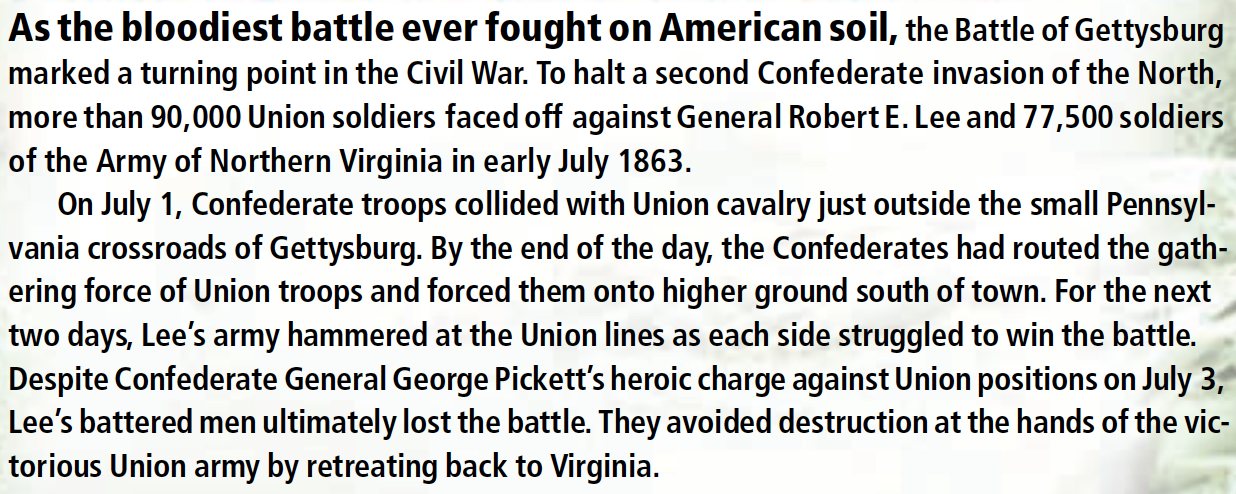
Who were the Copperheads? Which people were most likely to be Copperheads, and why?
Copperheads, or Peace Democrats, opposed the Civil War because they believed it was unjustified and being waged in an unconstitutional manner. Moreover, they came to believe that the benefits of winning the war were not worth the cost. They favored an armistice with the Confederacy. Southern sympathizers and those that feel war is immoral were most likely to be Copperheads.
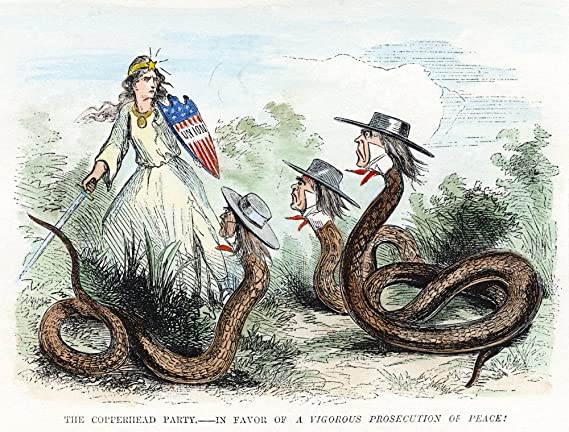
Explain the differences between the three farming arrangements in the South after the Civil War. Which system was best for the farmer?
Under tenant farming, farmers paid a cash rent—an arrangement that gave them more independence than farmers who labored under sharecropping and sharetenancy systems, in which farmers paid landlords for use of their land with a predetermined share of the crop.
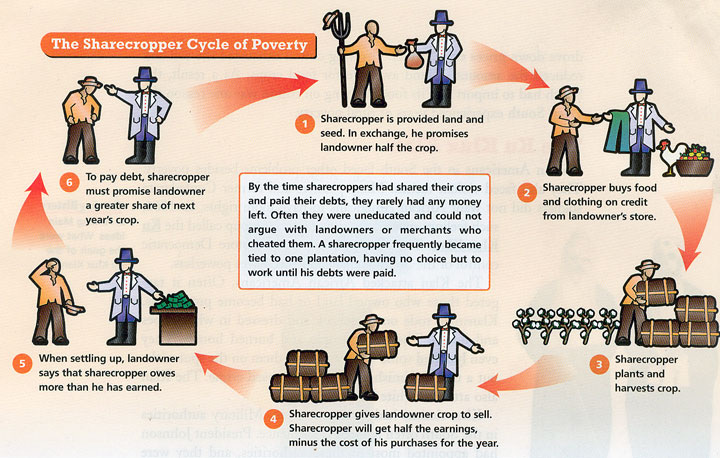
Who were the candidates in the election of 1860? What was the outcome? What did the election demonstrate?
Benefiting from the fracturing among the other political parties, Lincoln won the election handily, with 40 percent of the popular vote and almost 60 percent of the electoral vote. Still, he did not receive a single southern electoral vote. In fact, he was not even on the ballot in most southern states.
The election of 1860 demonstrated that Americans’ worst fears had come to pass. There were no longer any national political parties. Bell and Breckinridge competed for southern votes, while Douglas and Lincoln competed in the North and West. The North and South were now effectively two political entities, and there seemed no way to bridge the gap.
